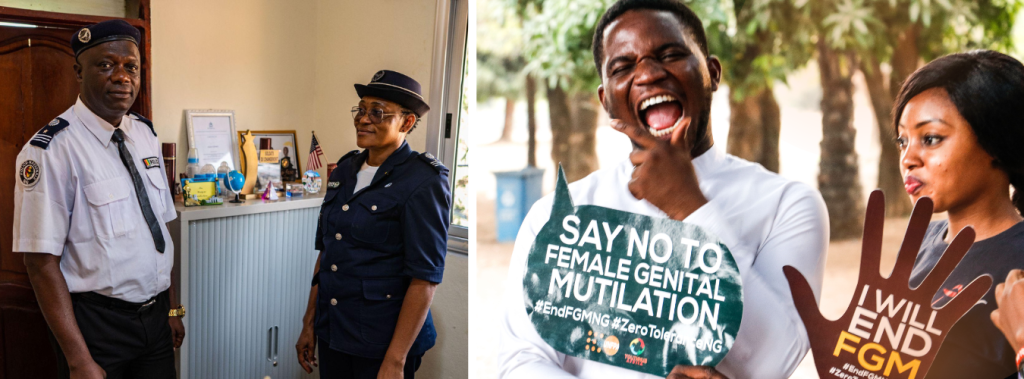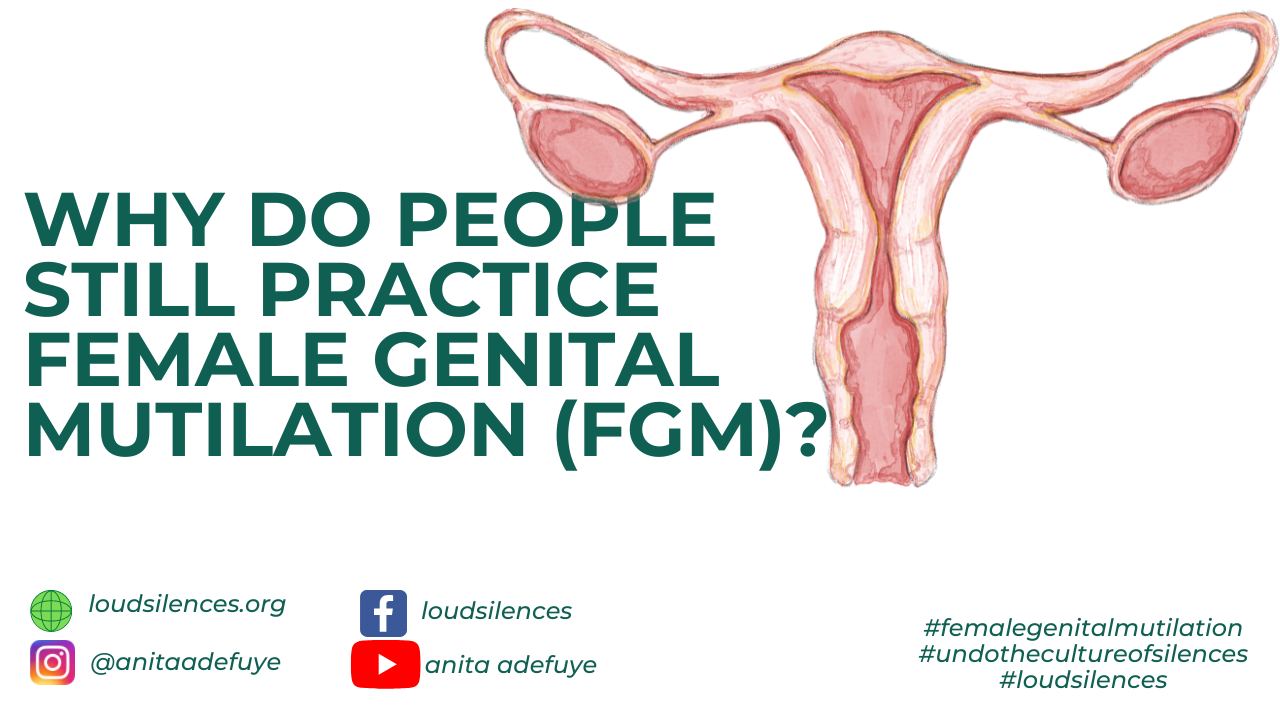Did you know that February 6th was the International Day of Zero Tolerance to Female Genital Mutilation?
If you’re wondering why do people would practice Female Genital Mutilation (FGM) in the first place, you are not alone. I mean what kind of people practice it anyways?
Sadly, Female Genital Mutilation is still a thing.
The World Health Organization (WHO) estimates that female genital mutilation (FGM) complications cost health systems US$ 1.4 billion a year, and that number will only rise unless urgent action is taken.

What is FGM?
Female genital mutilation (FGM), also known as cutting or female circumcision, entails removing some or all of a female’s external genitals partially or totally. It also covers any form of injury to a female’s genitals for non-medical reasons.
Performing FGM is like removing the batteries from a device and expecting it to function normally. It doesn’t benefit a girl or a woman but only interferes with the natural functions of a female’s body. In fact, it causes bleeding, problems urinating, and sometimes, cysts, infections, childbirth complications, including death.
FGM is illegal in most countries, and it’s also unlawful to take someone out of a country to make them have FGM in a country that isn’t against the law. The maximum sentence for carrying out FGM, or helping it to take place, is 14 years in prison.
Despite this, FGM is still rampant. According to UNICEF, more than 200 million girls and women worldwide have experienced FGM.
WHY DO PEOPLE PRACTICE FGM?
Although most of us would consider FGM as a senseless act of brutality, it is a deeply rooted practice in some communities, often motivated by religious, cultural, or social beliefs.
Some may view it as a necessary medical procedure, while others believe it improves the chances of getting married. However, FGM is a harmful practice that can lead to serious health problems that last a lifetime, including:
- Struggles with incontinence and urination
- Painful periods and other menstrual difficulties
- Recurrent vaginal, pelvic, or urinary infections
- Loss of sensation in the clitoris and/or vagina
- Pain during sexual intercourse
- Formation of cysts and abscesses
- Risk of kidney damage and failure
- Complications during pregnancy and childbirth
- Infertility
- Emotional and mental distress.
WHO IS AT RISK OF FGM?
Female genital mutilation (FGM) is a harmful practice that affects girls and young women, particularly those with family connections to countries where FGM is prevalent. These individuals may have been born in these countries or have immigrant parents.
Regardless of origin, FGM is a violation of human rights, and no one has the authority to carry out the procedure without the individual’s consent.
The timing of FGM can occur at various stages of a person’s life, including:
- When a baby is newborn
- During childhood or adolescence
- Just before marriage
- During pregnancy
TYPES OF FGM
The World Health Organization (WHO) classified the various forms of Female Genital Mutilation (FGM) into four (4) types. Here is a closer look at each type:
Type 1: Clitoridectomy
This type of FGM involves the partial or complete removal of the clitoris and/or the clitoral hood.
Type 2: Excision
Excision involves the removal of some or all of the clitoris, inner labia, and in some cases, the outer labia.
Type 3: Infibulation
Infibulation involves narrowing the vaginal opening with stitches, and sometimes involves the removal of the inner and outer labia. This form of FGM can cause difficulties with urinating and menstruating, as the space for these bodily fluids to pass through is limited.
Type 4: Other
This category encompasses any other harmful procedures performed on the vulva and/or vagina for non-medical reasons. This can include pricking, piercing, incising, scraping, and cauterizing (burning with a hot object).
If you’re a survivor of Female Genital Mutilation (FGM), it’s important to know that you’re not alone and there’s help available to mitigate the physical consequences. With medical intervention from trained professionals, such as a procedure known as deinfibulation, the effects of FGM can be reduced.
Don’t be afraid or ashamed to seek treatment. No matter your age, it’s your right to seek help for the physical effects of FGM. In fact, it is essential for your health and overall well-being. Also, you have the option to remain anonymous and do not need to disclose who performed the procedure, if you choose not to.
Be an ally to ending gender-based violence. If you see acts like this, be sure to speak up, educate and empower. Should those steps fail, involve necessary authorities.
SHARE YOUR STORY WITH US
At loudsilences we believe in going beyond the numbers and theories of sexual violence, mental health and other gender-based violence issues to putting real humans behind it.
Given this, we implore you, share your story with us and the world. Help other survivors know they are not alone.

Leave a Reply